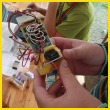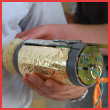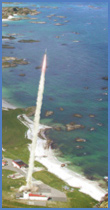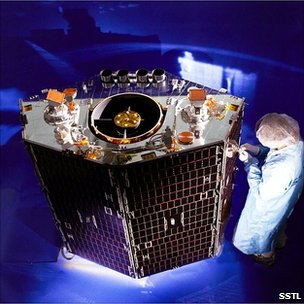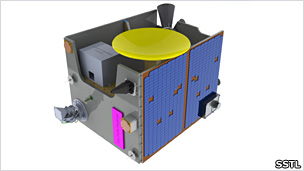Source:
Surrey Satellite Technology Ltd
Posted Wednesday, September 29, 2010
New Surrey Satellite Technology Ltd building under construction.
Surrey Satellite Technology Ltd (SSTL), in partnership with the University of Surrey's Surrey Research Park, is taking a new technical facility opposite its headquarters building in Guildford, UK providing the flexibility to work on a broader range of satellites and the capacity to integrate and test more satellites in parallel.
The 3,700sqm (40,000 sqft) $10 million pounds (UK) facility will provide cleanrooms, laboratories and testing facilities for state-of-the-art space engineering. It will house approximately 40 permanent staff and anything up to 100 further project specific staff from across the company at peak test and integration periods.
SSTL CEO, Dr. Matt Perkins, commented; "Our new integration and test facility will play a crucial role in our company's development. Not only will it enable us to integrate the European GNSS payloads for ESA, but it will make it possible for us to integrate and test satellites directly opposite our headquarters improving time to market with first rate intra-company communications."
Due for completion in April 2011, the new facility will be operating at full capacity as soon as it is opened when its secure cleanroom facilities will be used for the testing and integration of 14 navigation payloads for the deployment phase of Europe's future GNSS system.
The new laboratories & cleanrooms will bring the assembly, testing and integration of satellite platforms for SSTL's global customers into a single location, enabling engineers and project managers to participate in day-to-day decision making and mission reviews without leaving the site. The world-class test halls provide two 123 square meters walk-in thermal chambers, a seismic test platform with 16,000kg, 10,000kg & 8,000kg gantry cranes and reinforced floors, providing the greatest possible flexibility for integration and testing of small and larger spacecraft.
Construction is already under way, and the building is on target for opening in April 2011.
Visit SSTL on stand A5 at the IAC 2010
http://www.sstl.co.uk/iac2010
About SSTL
Surrey Satellite Technology Limited (SSTL) is the world's leading small satellite company, delivering operational space missions for a range of applications including Earth observation, science and communications. The Company designs, manufactures and operates high performance satellites and ground systems for a fraction of the price normally associated with space missions, with over 300 staff working on turnkey satellite platforms, space-proven satellite subsystems and optical instruments.
Since 1981 SSTL has built and launched 34 satellites - as well as providing training and development programmes, consultancy services, and mission studies for ESA, NASA , international governments and commercial customers, with its innovative approach that is changing the economics of space.
Based in Guildford, UK, SSTL is owned by EADS Astrium NV.
http://www.sstl.co.uk


